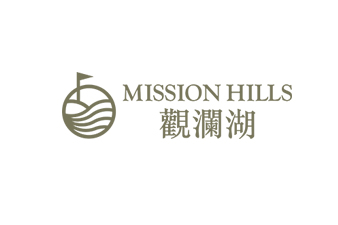
Spanning 25.212 km2, Mission Hills Group is the owner and operator of world-class leisure and resort destinations in southern China. The Group is accredited as the World's Largest Golf Facility by the Guinness World Records and provides an international exchange platform for commerce, sports and culture. Founded in 1992, the Group has expanded the reach of its business into Shenzhen, Dongguan and Haikou and established itself as an international leisure destination for sports, commerce, wellness, culture, retail-tainment, commercial and residential development.
Mission Hills offers a myriad of experiences including the largest golf course in the world, Asia’s largest tennis centre, a world-class chain of international business resort and clubhouse, large-scale international conference centre, luxurious spa resort, integrated sports and leisure facilities, restaurants offering Chinese and Western cuisines, training bases for golf and tennis, golf and tennis academies, residential community, Guinness’s World Record largest mineral spring and SPA, “Centreville” in Shenzhen (under-construction), as well as the “Low-carbon Town Center”, the Mission Hills Huayi Brothers Feng Xiaogang Movie Town and Mission Hills Lan Kwai Fong in Haikou. With overwhelming facilities and offerings, we attract more than 2 million visitors each year. The Group’s tourism and leisure developments has delivered optimal economic and brand benefits.
Mission Hills Group is committed to environmental protection and advocating sustainability development. Right from the start of site-searching to the design, construction and operation, the Group ensures that the principles of environmental protection are strictly adhered to. To reduce the impact on the environment, every possible measure such as energy / carbon reduction and waste recycling programs in our golf clubs, hotels and resorts were put in place.
Mission Hills had been guided by the ecology-comes-first development strategy throughout the planning and construction of the Haikou project. At the planning stage, the most authoritative organization in China, the Environmental Development Center of the Ministry of Environmental Protection of China, was invited to conduct environmental impact assessment and technical review so as to ensure the adherence of our eco-friendly strategies. Mission Hills chose to build our resort on top of a dormant volcano that may have been inactive for over 10,000 years, avoiding cultivated land, farmland and woodland. More than 30 million m3 of barren rock and land were covered with fertile soil. In addition, abandoned quarry pits were transformed into ecological pools. Recycled water system was also established for internal usage. The most advanced grass species for tropical climate were chosen for our golf courses which effectively reduces the use of fertilizers. In addition, great emphasis was placed on the preservation of biodiversity. To construct a spacious ecology and botanical plantation and preserve ancient Banyan, ancient Lychee vegetation, deserted slopes, lands and quarry pits as well as aggressive grass species such as the Fragrant Eupatorium Herb were cleared. From the assessed statistics in Haikou, we have retained the original landscape which covers over 15,385 mu with around 20,000 native trees, planted over 30 000 tropical woods, built 7 breathtaking lakes on ancient stone ruins, as well as wetlands of over 800 mu. Stone wall of over 50 km and 88 stone houses were also preserved and built. Through modification of land use and construction of ecological, leisure and tourism facilities, Mission Hills Haikou has become a pioneering project to turn barren volcanic land into a world-class integrated tourism and leisure hub for ecology, sports and wellness.
It received the award of 2016 “Global Model of Ecological Restoration and Protection” during the period of the Third United Nations Conference on Housing and Sustainable Urban Development (Habitat III) & The 11th Global Forum on Human Settlements.
It received the award of 2017 “Global Model of Green Commercial Cultural Complex” during the period of observance of World Cities Day—The 12th Global Forum on Human Settlements.
